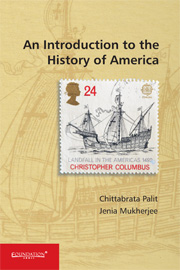Book contents
- Frontmatter
- Contents
- Preface
- Timeline of Events
- 1 An Early History: From Settlement to Colonization
- 2 The American War of Independence
- 3 The Formative Period: The Era of Solidarity and Expansion
- 4 ‘Two Americas’: Regional Differences and Sectional Conflicts
- 5 Agrarian and Industrial Revolutions
- 6 Resisting Voices
- 7 American Foreign Policy: Post-Monroe Doctrine to World War I
- 8 The Great Crisis and Its Recovery
- 9 The Rise of America: WWII and After
- 10 The Quest for Equality
- 11 American Environmentalism and Environmental History
- Epilogue: Perceiving American History Beyond the ‘Exceptionalist’ Framework
- Index
4 - ‘Two Americas’: Regional Differences and Sectional Conflicts
Published online by Cambridge University Press: 05 April 2014
- Frontmatter
- Contents
- Preface
- Timeline of Events
- 1 An Early History: From Settlement to Colonization
- 2 The American War of Independence
- 3 The Formative Period: The Era of Solidarity and Expansion
- 4 ‘Two Americas’: Regional Differences and Sectional Conflicts
- 5 Agrarian and Industrial Revolutions
- 6 Resisting Voices
- 7 American Foreign Policy: Post-Monroe Doctrine to World War I
- 8 The Great Crisis and Its Recovery
- 9 The Rise of America: WWII and After
- 10 The Quest for Equality
- 11 American Environmentalism and Environmental History
- Epilogue: Perceiving American History Beyond the ‘Exceptionalist’ Framework
- Index
Summary
The chapter includes the causes and course of the American Civil War which was fought between the industrial Northern and agrarian Southern states. It not only depicts the war as a political carnage but goes beyond to look into its socio-economic dimensions. That the war was decisive to the futuristic path of American History and made vast changes in the economic development of America is noted here. A critical interpretation revolves round the issue of slavery. The chapter ends with a biographical sketch of Abraham Lincoln, the chief architect of the victorious North in the war and the sixteenth President of the United States.
a. The Civil War
The American Civil War, fought between the Northern and Southern states with industrial and agrarian potentialities respectively, during the first half of the 1860s for over the secession of the Confederacy, should not only be looked as a political carnage but also from multi-variegated prisms – economic, societal, cultural, etc., as the outcome of the war was decisive to the futuristic path of American History. Charles A. and Mary R. Beard wrote in The Rise of American Civilization that the Civil War was a social war that made vast changes in the arrangement of classes, in the accumulation and distribution of wealth in the course of industrial development.
- Type
- Chapter
- Information
- An Introduction to the History of America , pp. 106 - 118Publisher: Foundation BooksPrint publication year: 2014



